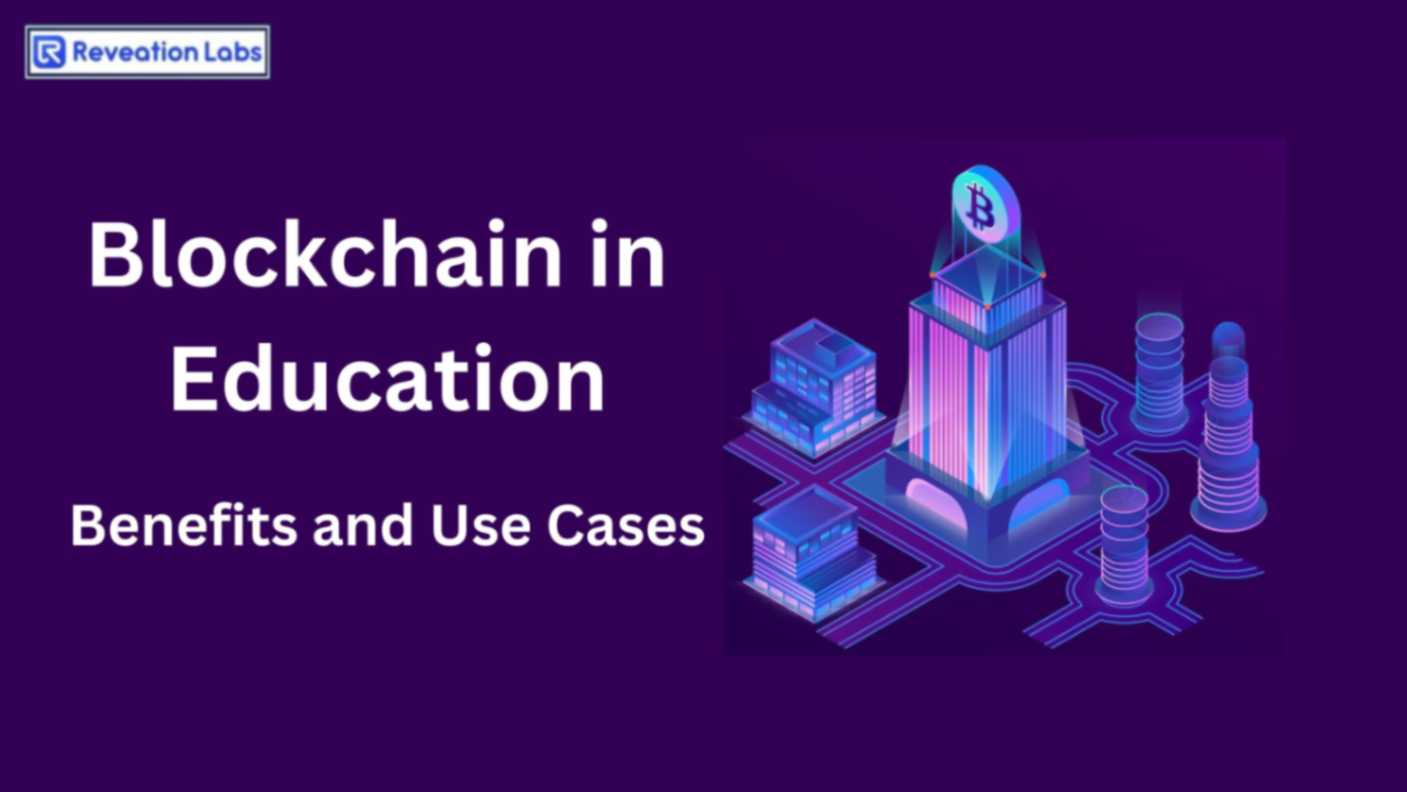Blockchain in Education: Benefits and Use Cases

In an era where technology is constantly reshaping our world, education stands as no exception to the transformative power of innovation. blockchain, a revolutionary technology that has the potential to redefine how we approach education in the 21st century.
Blockchain, often associated with cryptocurrencies, is fundamentally a secure and transparent digital ledger. Its application in the education sector is nothing short of a game-changer.
Benefits of Implementing Blockchain in Education
Now, let's delve into the remarkable benefits that arise from integrating blockchain into the education ecosystem:
1. Increased Data Security: The important concern in education is safeguarding sensitive student information. Blockchain's security measures ensure data integrity and protection against breaches, forging a secure fortress for academic records.
2. Enhanced Transparency: Education thrives on trust, and blockchain brings transparency to the forefront. Every transaction, from course enrollment to degree verification, is recorded in an immutable ledger accessible to all relevant parties, fostering trust and accountability.
3. Streamlined Credential Verification: Bid farewell to manual verification processes. With blockchain, the validation of academic credentials becomes instantaneous and tamper-proof, simplifying the hiring process for institutions and employers alike.
4. Cost Reduction: Educational institutions struggle with overheads and administrative costs. Blockchain optimizes these processes, minimizing bureaucracy and significantly reducing operational expenses.
5. Improved Student Experience: Students are at the heart of the educational ecosystem. Blockchain enhances their experience by offering a digital, portable, and easily shareable repository of their achievements, empowering them to take charge of their academic journey.
Applications of Blockchain in Education
Now that we've explored the benefits of blockchain in education, let's delve deeper into how this technology is actively transforming various aspects of the educational landscape:
A. Secure Student Records:
B. Academic Credential Verification:
C. Reducing Academic Fraud:
Also Read: Blockchain In Finance: Exploring Services & Benefits
Real-World Examples of Educational Institutions Using Blockchain
Southern New Hampshire University (SNHU): SNHU partnered with blockchain startup Sony Global Education to create a blockchain-based system for storing and verifying student records. This initiative aimed to tackle challenges related to credential fraud and the slow verification of academic records. The challenge here was integrating the blockchain system with existing infrastructure, but the result was a more efficient and reliable verification process.
Open University of West Africa (OUWA): OUWA, a Pan-African institution, adopted blockchain to offer secure and accessible digital transcripts and certificates. Their challenge was to gain widespread adoption and acceptance of blockchain-verified credentials across different African countries with varying educational systems. The impact has been increased trust in qualifications and simplified cross-border recognition.
How to Get Started with Blockchain in Education?
Interested to tackle the power of blockchain for your educational institution or personal academic journey? Here's a clear way to help you get started.
For Educational Institutions:
Assess Needs and Objectives: Begin by identifying the specific challenges you aim to address with blockchain technology. Whether it's improving data security, streamlining verification processes, or reducing fraud, a clear understanding of your goals is essential.
1. Research Blockchain Solutions: Explore existing blockchain platforms and solutions tailored for education. Consider factors like scalability, ease of integration with your existing systems, and compatibility with industry standards.
2. Engage Stakeholders: Involve key stakeholders, including administrators, faculty, and IT teams, in the decision-making process. Ensuring buy-in and collaboration is crucial for successful implementation.
3. Pilot Programs: Start with small-scale pilot programs to test the technology's feasibility and effectiveness. This allows you to work out any kinks and refine your approach before full-scale deployment.
4. Integration and Training: Integrate the chosen blockchain solution with your existing systems. Provide training to staff members and end-users to ensure they are comfortable with the new technology.
5. Data Migration: Transfer existing student records and credentials to the blockchain platform securely. Ensure data accuracy during this process.
6. Secure the Network: Implement robust security measures to protect the blockchain network and sensitive data. Regularly update security protocols to stay ahead of emerging threats.
7. Promote Adoption: Educate students, graduates, and potential employers about the benefits of blockchain-verified credentials. Encourage them to use and trust the system.
For Individuals:
1. Request Blockchain Credentials: If your educational institution offers blockchain-verified credentials, request them. Ensure you have digital copies of your diplomas, certificates, and transcripts on the blockchain.
2. Create a Digital Wallet: To manage your blockchain credentials, set up a secure digital wallet. Several user-friendly blockchain wallet apps are available.
3. Verify Credential Issuers: Be cautious when sharing your blockchain credentials. Verify that the issuer is a legitimate educational institution or organization. Scammers can attempt to issue fake credentials on blockchain platforms.
4. Share Credentials Securely: Use your digital wallet to share your blockchain-verified credentials when applying for jobs or further education. Ensure the recipient understands how to verify them.
5. Stay Informed: Keep up with developments in blockchain technology and its application in education. Understanding how blockchain works will empower you to make the most of this innovative tool.
Conclusion
In the changing world of education, blockchain technology is a game-changer, offering better security, transparency, and efficiency. It helps with managing data, verifying credentials, and preventing fraud. Real-world examples show that it works, despite some initial challenges. Whether it’s an institute or a student, blockchain offers a path to a more reliable education future, where trust and access are key. Embrace this technology because it's rewriting the future of education.
Comments
Post a Comment